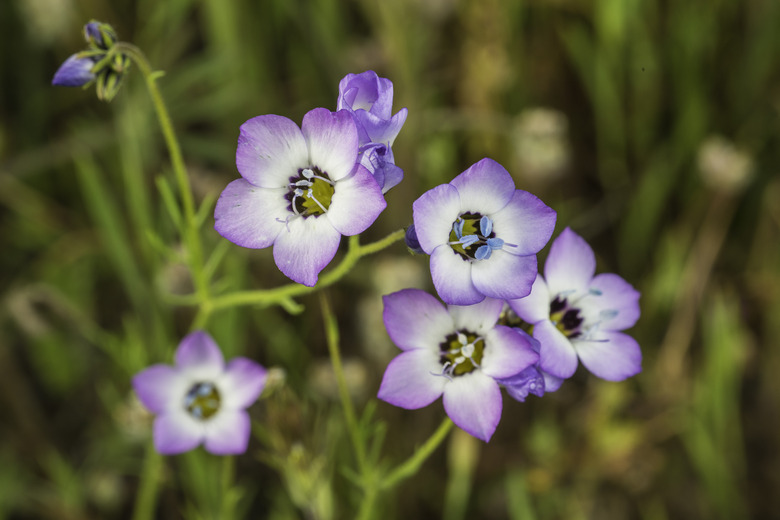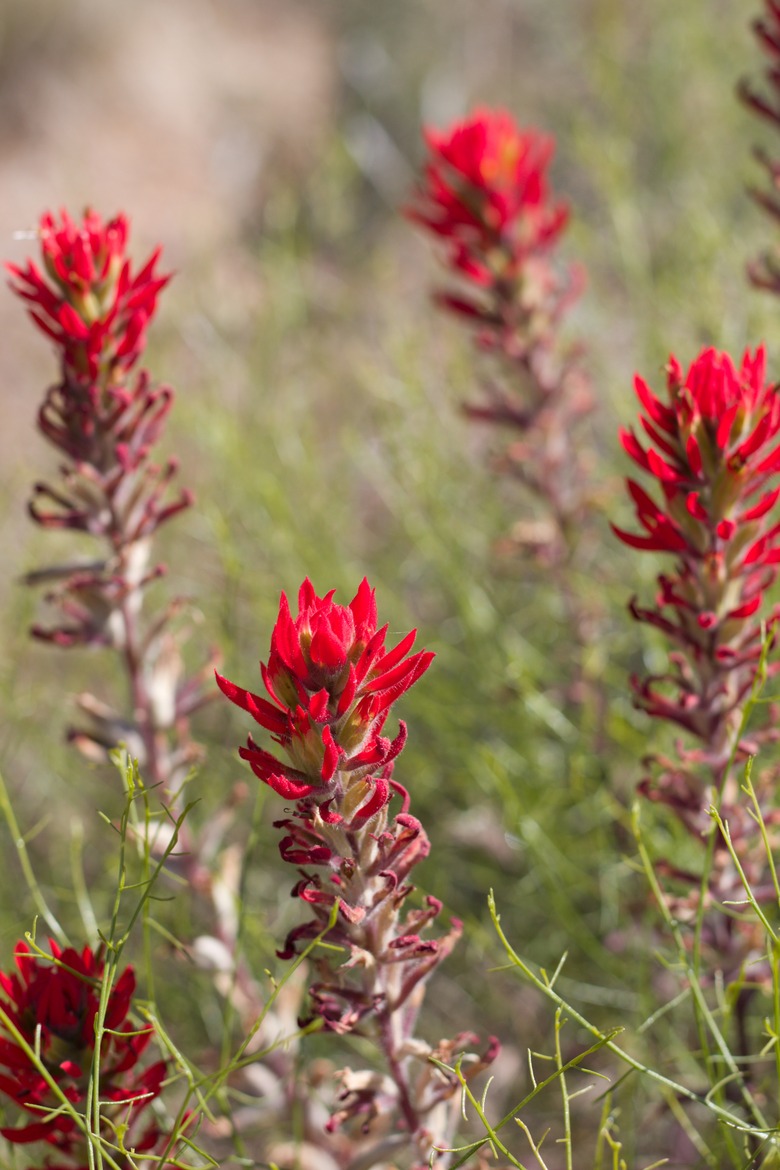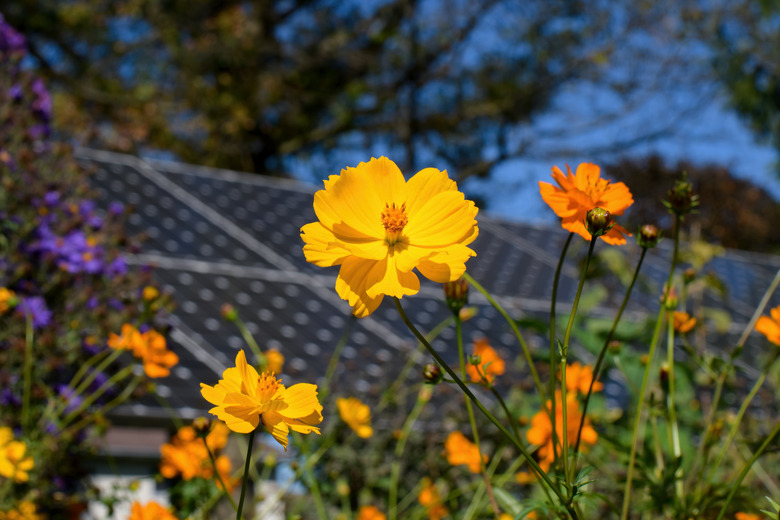A Beginner's Guide To Growing Native Plants
Plants are the foundation of our ecosystems, and that's one of the most important reasons for introducing native plants into your garden. Native plants are those that grow naturally in any given region, and that makes them more adaptable to local conditions than species that come from far away. Plants that are native to your locale may not always be as showy as exotic ones — in fact, some of them may be plants you're used to considering as weeds — but that doesn't mean they aren't colorful.
Every North American region has its own set of native species, so the first step in establishing a native garden is to determine those species. Because the native plants in your area have been growing there for thousands of years, they are perfectly suited for your climatic conditions, and that makes them easier to grow and maintain than imported plant species. Gardening with native plants can be instructional. You learn more about the species that surround you, it's better for the environment as a whole and it's fun.
Why Grow Native Plants?
Why Grow Native Plants?
Imagine that you could time travel to a period 600 years ago before Europeans came to the New World and began carving up sections of land to make homesteads. This is an imaginary journey, so you can fly, and as you crisscross the continent, you see that each region has its own characteristic trees, bushes, flowers and ground cover, and it's all thriving without human intervention. Wildlife and indigenous people roam freely, using the vegetation for food and shelter, and insects abound, eating leaves, drinking nectar and pollinating as a vital part of the life cycle.
Now, come back to the present, to a time when the land has been compartmentalized and fenced off. Instead of verdant pastures and thriving woodlands, there are roads, parking lots and buildings, and the infrastructure for automobiles dominates. What's left of the native greenery you witnessed 600 years ago has been relegated to ever more isolated forests and woodlands, and in its place are mowed lawns and imported plants that can't support a healthy ecosystem.
Planting native species in your garden won't bring back the ecosystems that existed 600 years ago, but it can help restore ecological balance in a small way, and that's a start. Because native plants are adapted to local conditions, they require less water than non-native ones, and that makes them easier to maintain.
Growing native plants as opposed to much thirstier exotic species saves water, which is an increasingly precious resource on a warming planet. Native plants don't need fertilizer (the manufacture of which also contributes to global warming), they attract pollinators and wildlife and they rarely require the use of polluting pesticides. Gardening with native plants is a way to make a green activity even greener.
How to Get Started with Native Gardening
How to Get Started with Native Gardening
You need two things to get started with native gardening: a collection of native plants and a place to plant them. Garden centers aren't the best places to research native species because they tend to stock mostly non-native ones. That doesn't mean you won't be able to find native plants there, but it's unlikely that you'll find anyone who knows much about them.
Fortunately, there are plenty of online resources, such as the Native Plant Society, the Audubon Society and the Lady Bird Johnson Wildflower Center. You can get an idea of what you want to put in your garden using their databases and illustrations, and then you can shop for those plants in your area. If your garden center doesn't stock what you want, you can probably order it online, and you may even find what you want growing in a nearby field or woodland (provided it's legal to harvest them).
Your selections will depend on where you intend to plant them and the growing conditions. You can incorporate native species into an existing landscape or garden, or you can start fresh with a brand-new garden. Take time to evaluate the growing conditions (full sun or partial shade, soil type, drainage) so you're able to choose plants that will grow best there. Observe plants growing naturally in your neighborhood to get an idea of how they group together. Plants usually derive mutual benefits by growing in groups, and duplicating the grouping makes for a healthier garden ecosystem.
Designing a Native Garden
Designing a Native Garden
Visual interest is just as important as the health of the garden in garden design, and there are several ways to create it. One way is to choose wildflowers that bloom at different times of the year to ensure your garden always has color. For example, various species of aster (Symphyotrichum, formerly Aster) are native to the upper Midwest states, and the province of Ontario shows blue and purple blooms from August through October. The coneflower (Echinacea spp.) is widespread, growing in all but the far Western states and provinces, and its flowers bloom from June to November. Add the early blooming yellow trout lily (Erythonium americanum, USDA zones 3-8) and you have all-season color as well as pollen for bees throughout the summer.
Match the plants you choose for your native landscaping to the prevailing conditions of your garden, which is a microclimate within the broader climatic conditions of the region in which you live. Choose sun-loving plants for the areas of the garden that receive at least six hours of full sun per day. If your garden area is particularly sunny and you prefer an abundance of shade-tolerant species, plant native trees or bushes, such as pagoda dogwood (Cornus alternifolia, USDA zones 3-7), to provide the shade for them. To keep maintenance to a minimum, plants you select should all be ones that occur in the same or a similar climate so you won't have to water any part of the garden more than another part.
Because you're using plants that occur naturally in your area, it's important to define your garden with a wall or some other type of border to differentiate it from the rest of the landscape. To keep any particular wildflower from dominating the garden, none should reach a final height of more than half the width of the garden bed. The compass plant (Silphium perfoliatum, USDA zones 3-9), also called cup plant because of its cup-shaped leaves, is a member of the aster family that grows in prairies and pasture lands, reaching from 4 to 8 feet tall, so it's too tall for all but the largest garden beds, but it could be a good addition to a field of wildflowers.
Preparing the Garden Bed
Preparing the Garden Bed
Native plants can spring up all by themselves in their natural habitat, and weeds do the same thing, but what differentiates the plants in your garden from weeds is the fact that you want them to be there. It's best to eradicate the true weeds, which are the volunteers you don't want, before you plant your garden, or you'll be spending a lot of your time pulling them out as they emerge. There are two ways to do this without turning the soil, which can just bury seeds deeper and make germination more likely, and without introducing poisons.
The first way is solarization, which means to water the garden bed well, cover it with clear plastic and let the sun's heat kill all the plant life, including seeds, small roots and seedlings. Solarization can take several months, though, and it's a strategy best used if you're content to wait until early spring of the following year to plant.
If you want an immediate bed for planting, you can use the second method, which is called lasagna gardening. You cover the bed with sheets of cardboard and place soil on top for planting. The cardboard deprives all vegetation underneath it of light and oxygen and gradually decomposes to become part of the soil as the garden becomes established in the topsoil, and the roots gradually burrow deeper.
Instead of starting a native garden from scratch, you may be interested in introducing native wildflowers into an existing grassy field, in which case mowing the grass to a height of 6 inches should allow the seeds you sow to fall to the ground and get a good footing. If you're starting a new bed, however, you may want it to get established more quickly, in which case you're better off with young plants, which you may find at a garden center or may be able to transplant from a nearby field. When planting them, dig holes twice as large as the root balls and backfill with native soil — no fertilizer needed.
Maintenance and Plant Placement Tips
Maintenance and Plant Placement Tips
Like all plants, native plants need a lot of water in the first two or three weeks after planting, but after that, they shouldn't need any more than what is provided by rainfall. They were growing in your area long before you arrived, and they know how to survive. Even though they don't need fertilizer, they do need a certain amount of organic matter, which you can help provide by pulling dead growth and throwing it back into the garden to allow it to decompose. Wildflowers and other small plants rarely need mulch, but shrubs and trees benefit from mulching to help keep their roots warm during the first winter.
Place plants in conditions suited for them if you want them to thrive and be aware of how they will interact with other plants in the garden.
- Swamp milkweed (Asclepias incarnata, USDA zones 3-9) needs plenty of sun, but it also need moisture and won't do well on a parched hillside. When it thrives, this plant attracts monarch butterflies.
- Blue columbine (Aquilegia caerulea, USDA zones 3-10), with its showy blue and white petals, is one of the most popular wildflowers in North America. Be careful because it loves sun but needs a little shade to thrive.
- Big bluestem (Andropogon gerardii, USDA zones 4-9) is a prairie grass that can be used ornamentally in a native garden, but it can be invasive in some regions, so use it with care.
- American wintergreen (Gaultheria procumbens, USDA zones 3-8) is a good native ground cover, and it prefers lots of shade and acidic soil, so the best place to plant it is near pine or fir trees in a woodland setting.
One of the problems with purchasing plants from garden centers is that they often sell cultivars of the species you want, not the straight species themselves. The problem with this is that cultivars are basically clones, and planting a garden of clones has an impact on the natural genetic diversity needed for survival. A disease that strikes a garden full of clones is more likely to wipe out the entire garden than if the plants were wild. Plants develop different traits in response to growing conditions in the wild, and this biodiversity allows some plants — perhaps only a few — to survive attacks that kill most others, and the survivors can reseed the garden.
References
- Lady Bird Johnson Wildflower Center: A Guide to Native Plant Gardening
- Dyck Arboretum of the Plains: How to Design a Native Plant Garden
- Audubon: Why Native Plants Matter
- California Native Plant Society: Home
- West Cook Wild Ones: Guide to Native Gardening
- Audubon: How to Buy Native Plants
- U.S. Forest Service: Native Gardening


